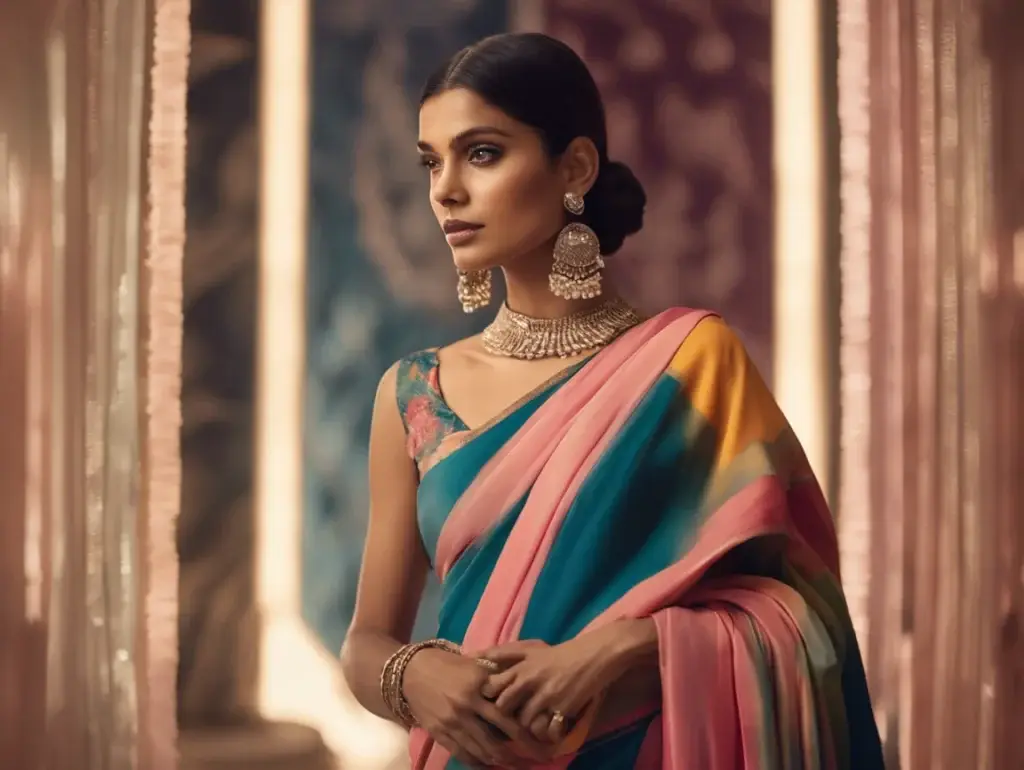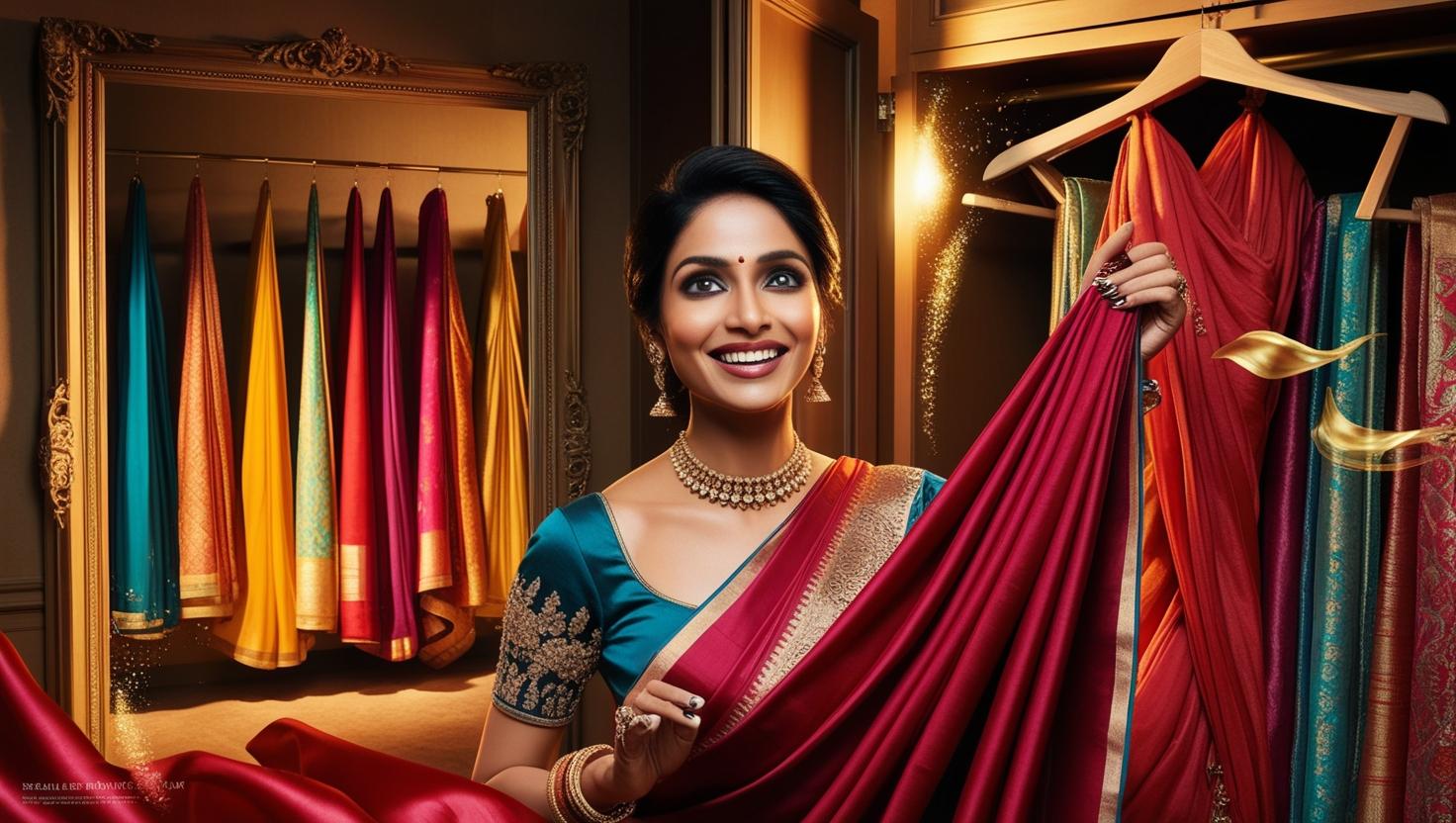Why Traditional Sarees Are Making a Comeback in Fashion
Traditional sarees are surging in popularity among fashion-forward women who value both style and cultural heritage. This centuries-old garment is finding new life in contemporary wardrobes, appealing to everyone from young professionals to celebrity style icons. In this article, we’ll explore how traditional weaving techniques are being celebrated in modern fashion and reveal how today’s designers are reimagining sarees for versatile everyday wear. We’ll also look at how this comeback is creating economic opportunities for rural artisan communities who preserve these ancient textile traditions.
The Historical Significance of Traditional Sarees
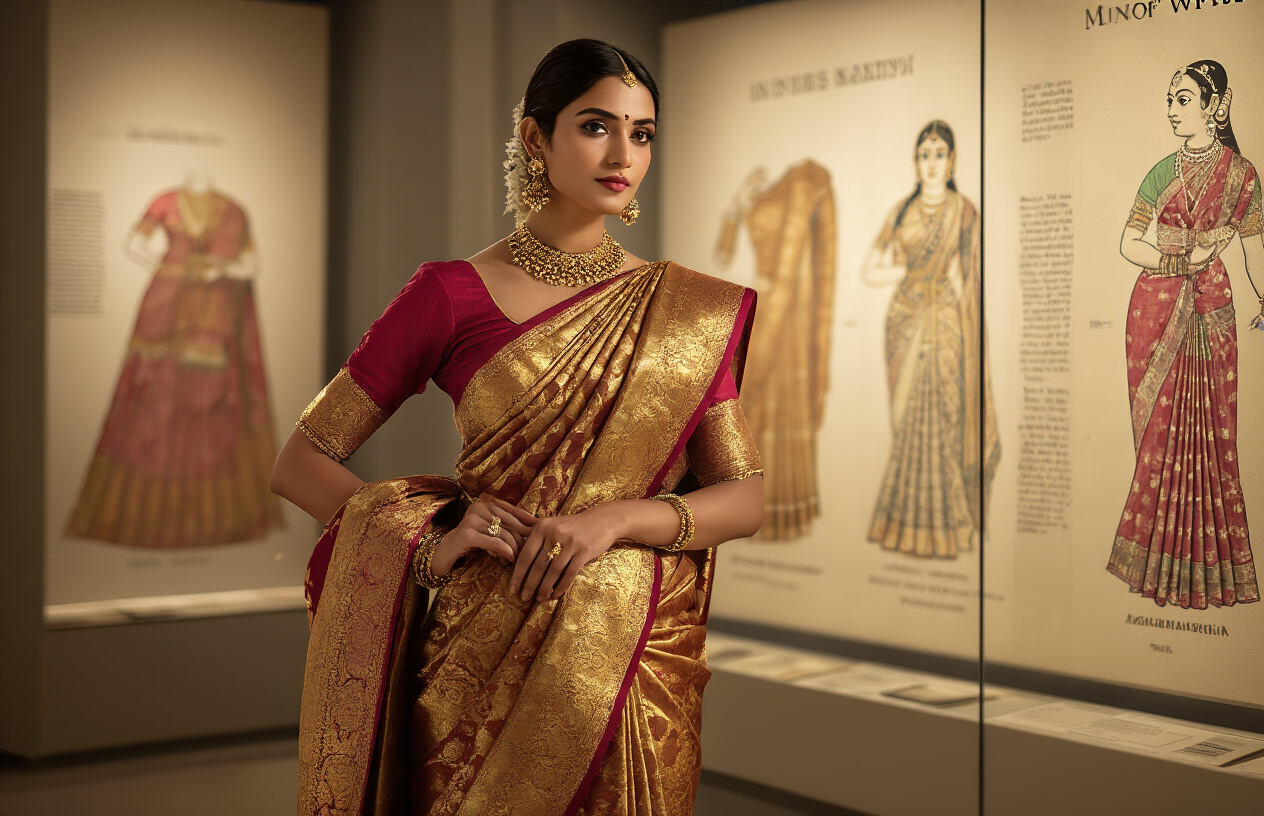
Cultural Heritage and Regional Diversity
Indian sarees aren’t just garments—they’re walking canvases of cultural history. Each region tells its own textile story. The deep red Banarasi from Uttar Pradesh flaunts intricate gold work while Kerala’s cream Kasavu sports a distinctive gold border. Maharashtra’s Paithani bursts with peacock motifs while Bengal’s Jamdani weaves poetry in thread.
What’s fascinating is how these styles developed based on local resources and needs. Coastal regions preferred lightweight cottons, while royal courts demanded opulent silks. Even the climates shaped what women wore—breathable muslins for humid Bengal, warmer weaves for cooler northern regions.
When you wear a traditional saree, you’re not just dressed—you’re geographically located. One glance, and a knowledgeable eye can tell if you’re channeling Gujarat’s patola or Odisha’s ikat tradition.
Symbolism and Storytelling Through Patterns
The patterns on sarees speak volumes if you know how to listen. Those aren’t random dots and lines—they’re ancient symbols carrying wishes and warnings.
Peacocks represent beauty and immortality. Mangoes symbolize fertility. Elephants stand for wisdom and royal power. Even the humble lotus isn’t just pretty—it’s spiritual awakening blooming from muddy waters.
Wedding sarees particularly shine with meaning. Red isn’t just striking—it symbolizes prosperity and new beginnings. Those tiny buttas (motifs) scattered across the fabric? They’re silent prayers for abundance and protection.
Craftsmanship That Spans Generations
The magic of traditional sarees lies in the hands that create them. In small villages across India, families have passed down weaving techniques for centuries—sometimes so specialized that only a handful of people know them.
Take the Pochampally ikat, where threads are tie-dyed before weaving—a mind-boggling process requiring mathematical precision. Or the Kanjeevaram silk, where three people work simultaneously on one loom.
What’s truly remarkable is how these artisans work without modern technology. No computers designing patterns, no machines executing complex weaves—just human hands, practiced eyes, and inherited knowledge.
Evolution Through the Decades
Traditional sarees have never been static. They’ve always adapted while maintaining their essence. During colonial times, European floral motifs snuck into traditional designs. Post-independence, sarees became symbols of national pride and identity.
The 70s and 80s saw synthetic fabrics challenging handlooms, while the 90s brought experimentation with blouse designs and draping styles. The 2000s witnessed a concerning decline as western wear gained popularity.
Today’s revival isn’t just nostalgia—it’s recognition that these textiles represent sustainable fashion before sustainability was trendy. Young designers are collaborating with traditional weavers, creating sarees that honor heritage while speaking to contemporary tastes.
What goes around comes around. The saree never really left—it just waited for us to appreciate its timeless appeal again.
Modern Fashion’s Embrace of Traditional Textiles
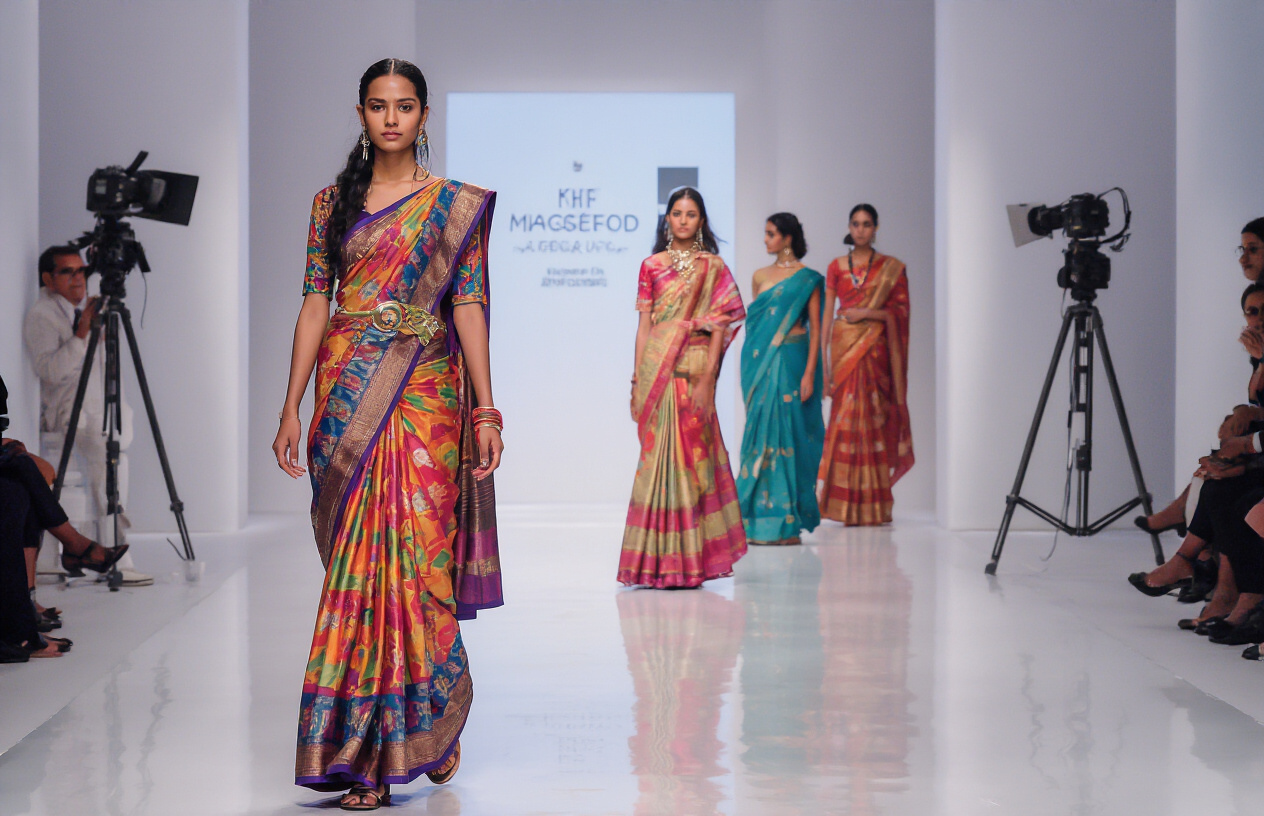
Designer Collections Featuring Classic Saree Styles
Fashion runways have fallen head over heels for traditional sarees again. Top designers aren’t just dabbling in saree designs—they’re making them centerpieces of their collections.
Designers like Sabyasachi Mukherjee and Raw Mango’s Sanjay Garg have transformed how we see these six yards of elegance. They’ve taken age-old weaving techniques and given them contemporary twists that fashion enthusiasts can’t get enough of.
What’s crazy is how these designers are blending old-school craftsmanship with modern aesthetics. Banarasi silk sarees now come with unexpected color combinations. Kanjeevaram sarees feature reimagined borders. The result? Pieces that honor tradition while feeling completely fresh.
Celebrity Endorsements Driving Popularity
Nothing kickstarts a fashion trend quite like celebrity power. When Deepika Padukone rocks a handloom saree to an international event, people notice.
Celebs aren’t just wearing sarees for Indian functions anymore. They’re flaunting them at global red carpets, film festivals, and high-profile interviews. Priyanka Chopra’s Met Gala appearance in a saree-inspired outfit broke the internet and showed the world how versatile this garment really is.
Social media has amplified this effect tenfold. One viral photo of Sonam Kapoor in a traditional weave can send thousands rushing to recreate the look.
Sustainable Fashion Movement’s Impact
The fashion world is finally getting serious about sustainability, and traditional sarees fit perfectly into this new mindset.
Handloom sarees are basically the original slow fashion. They’re made with natural fibers, crafted by skilled artisans, and designed to last generations—not seasons. In a world drowning in fast fashion waste, these qualities suddenly seem revolutionary.
Young consumers especially are connecting with the stories behind their clothes. They want to know who made their garments and under what conditions. Traditional saree weaving communities offer transparent production processes that ethical shoppers crave.
Plus, the versatility is unmatched. A single saree can be styled dozens of ways, making it the ultimate capsule wardrobe piece for sustainability-minded fashionistas.
The Versatility Factor: Why Sarees Appeal to Modern Women
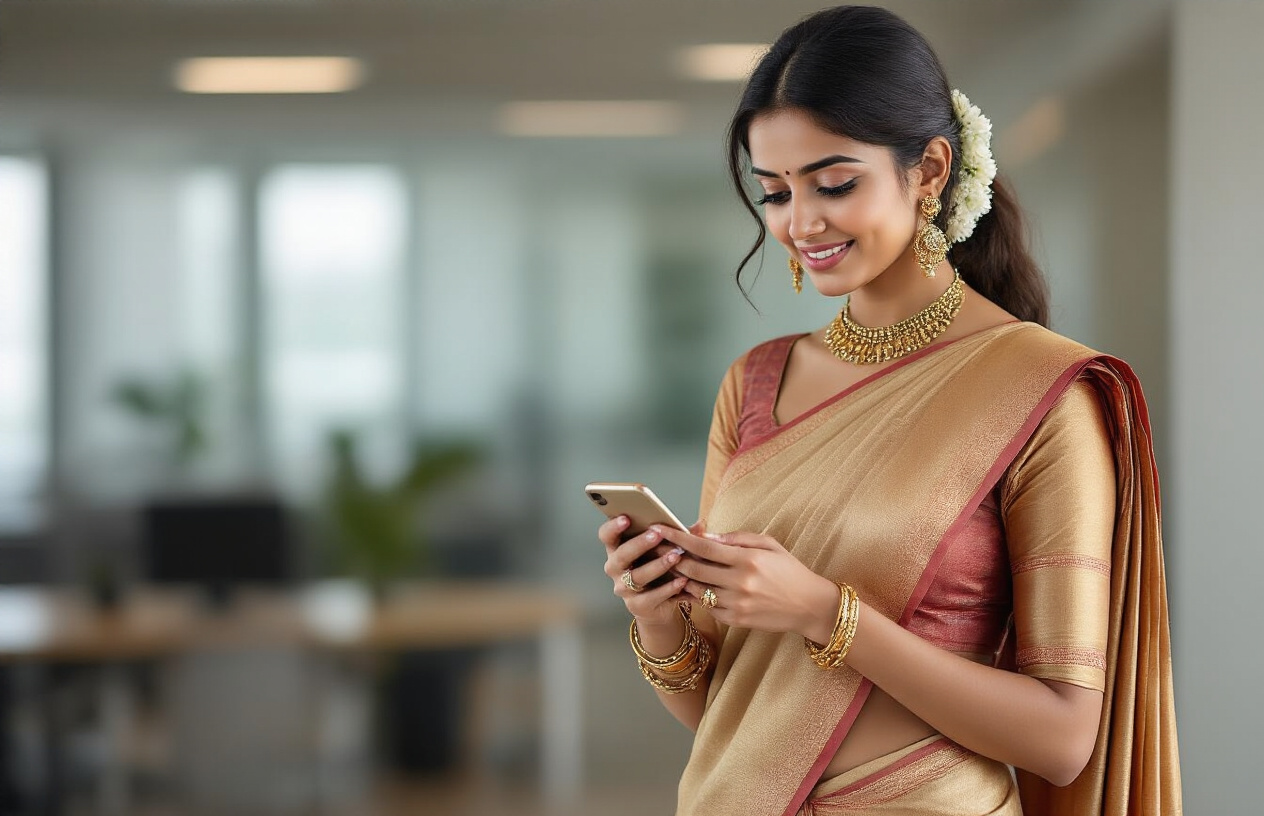
Contemporary Styling Approaches
Gone are the days when sarees were just for special occasions. Modern women are rocking traditional sarees in fresh, unexpected ways. Instead of the conventional blouse, pair your saree with a crisp white shirt for an office-ready look. Or throw on a leather jacket over a silk saree for that perfect blend of traditional and edgy.
The styling game has completely transformed. Women are now draping sarees over jeans, wearing them with sneakers, and even styling them as dresses with belts. The point is—there are no rules anymore!
Fusion Wear Innovations
The saree’s comeback isn’t just about traditional draping—it’s evolved into something totally new. Designers are creating pre-stitched sarees, saree gowns, and dhoti-style sarees that give you the traditional vibe without the draping hassle.
I’m seeing more women opt for saree pants and saree dresses that honor the fabric and aesthetic while adapting to contemporary lifestyles. These pieces are perfect for those who love the look but need something more practical for their busy lives.
Adaptability for Different Body Types
What’s truly magical about sarees is how they flatter literally everyone. Unlike trendy western outfits that seem designed for one body type, sarees can be draped in countless ways to highlight your best features.
High waist drapes accentuate curves, while straight drapes create a sleek silhouette. The pleats can be adjusted to add volume or minimize certain areas. And the pallu (the loose end) can be styled in numerous ways to complement your upper body shape.
Day-to-Night Transition Ease
The modern woman juggles multiple roles daily, and her wardrobe needs to keep up. Sarees shine here too! The same saree can transition from a professional daytime look to evening glam with just a few tweaks.
For day wear, opt for a simple drape with minimal jewelry. When evening hits, change your blouse to something more embellished, add statement jewelry, and restyle the pallu more dramatically. One outfit, endless possibilities.
Social Media Influence on Styling Trends
Instagram and Pinterest have revolutionized saree styling. Hashtags like #SareeNotSorry and #100SareePact have created communities of saree enthusiasts sharing innovative draping styles and modern takes on this traditional garment.
Social media influencers regularly showcase how to incorporate sarees into everyday wardrobes, making them feel accessible to younger generations. These platforms have become virtual lookbooks, inspiring women to experiment with their mother’s or grandmother’s vintage sarees in completely new ways.
The best part? These online communities celebrate sarees across all ages, body types, and personal styles—proving that this traditional garment truly belongs in the modern fashion landscape.
Economic Revival of Traditional Weaving Communities
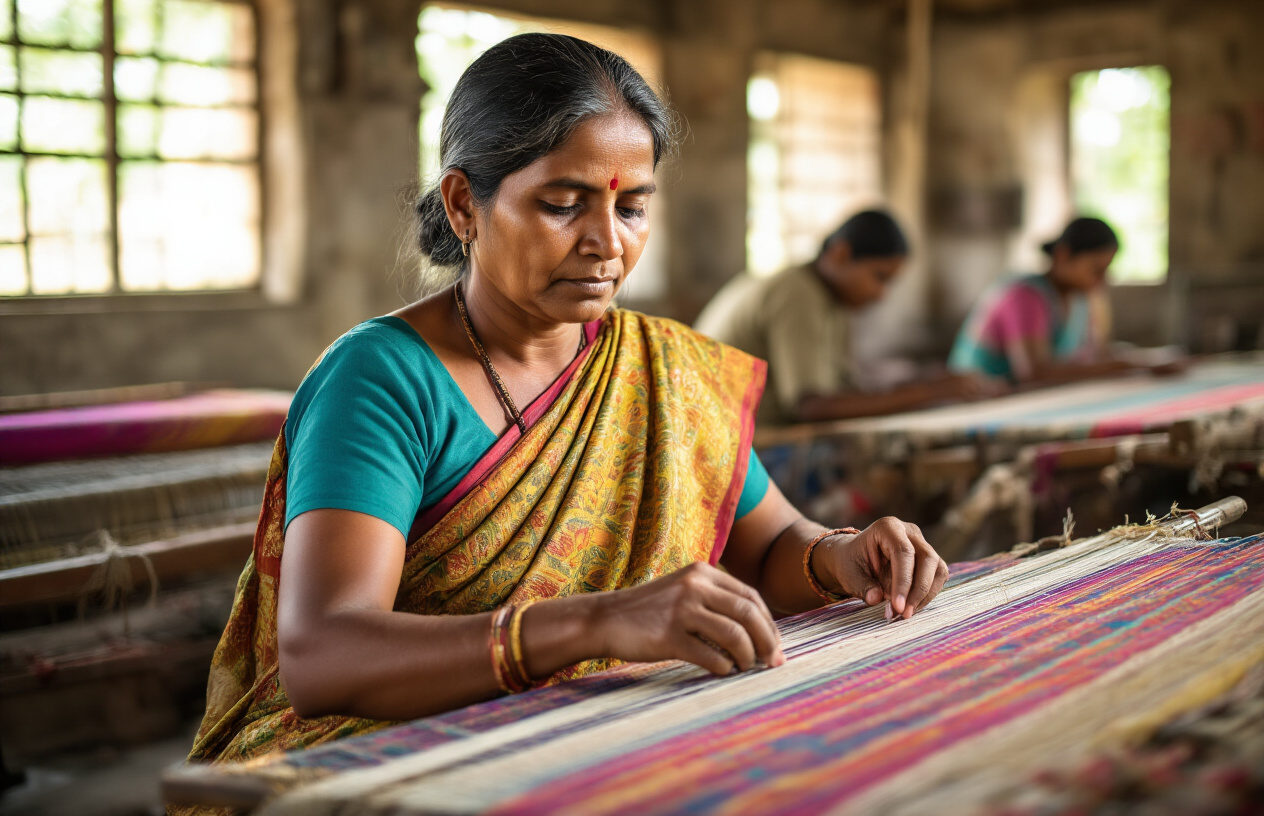
Artisan Empowerment Initiatives
The revival of traditional sarees isn’t just a fashion statement—it’s breathing new life into entire communities. Across India, weaving villages that once faced extinction are now humming with activity again.
Take the Pochampally weavers of Telangana. Just a decade ago, younger generations were abandoning looms for city jobs. Now? They’re returning home as their parents’ sarees sell for premium prices in urban boutiques.
What changed? Smart initiatives that put power back in artisans’ hands.
Organizations like Dastkar and Antaran have created training programs where master weavers teach not just weaving techniques but also basic business skills. Weavers now understand pricing, quality control, and market trends—things previously controlled by middlemen who kept them in poverty.
Direct-to-Consumer Platforms
Remember when buying a handloom saree meant either visiting remote villages or paying massive markups at fancy stores? Those days are gone.
Digital platforms have revolutionized how weavers reach customers. Sites like GoCoop, Jaypore, and even Instagram shops connect artisans directly with saree lovers worldwide.
A Kanjeevaram weaver from Tamil Nadu can now sell directly to a customer in New York without surrendering profits to multiple middlemen. This direct connection has doubled—sometimes tripled—artisans’ incomes.
The numbers tell the story:
- Average weaver income before D2C platforms: ₹8,000/month
- Average weaver income after: ₹18,000-25,000/month
Government Support Programs
The government has finally woken up to the potential of traditional textiles.
The “India Handloom Brand” initiative certifies authentic handloom products, giving consumers confidence and weavers recognition. Meanwhile, the Amended Technology Upgradation Fund Scheme provides subsidized loans for weavers to modernize their equipment without compromising traditional techniques.
Tax exemptions for handloom cooperatives have made business operations sustainable, while skill development schemes are training new generations in these ancient arts.
What’s remarkable is seeing these communities transform. Villages like Chanderi in Madhya Pradesh now have better schools, healthcare facilities, and infrastructure—all funded by their thriving textile economy.
Global Appreciation and Cross-Cultural Adoption
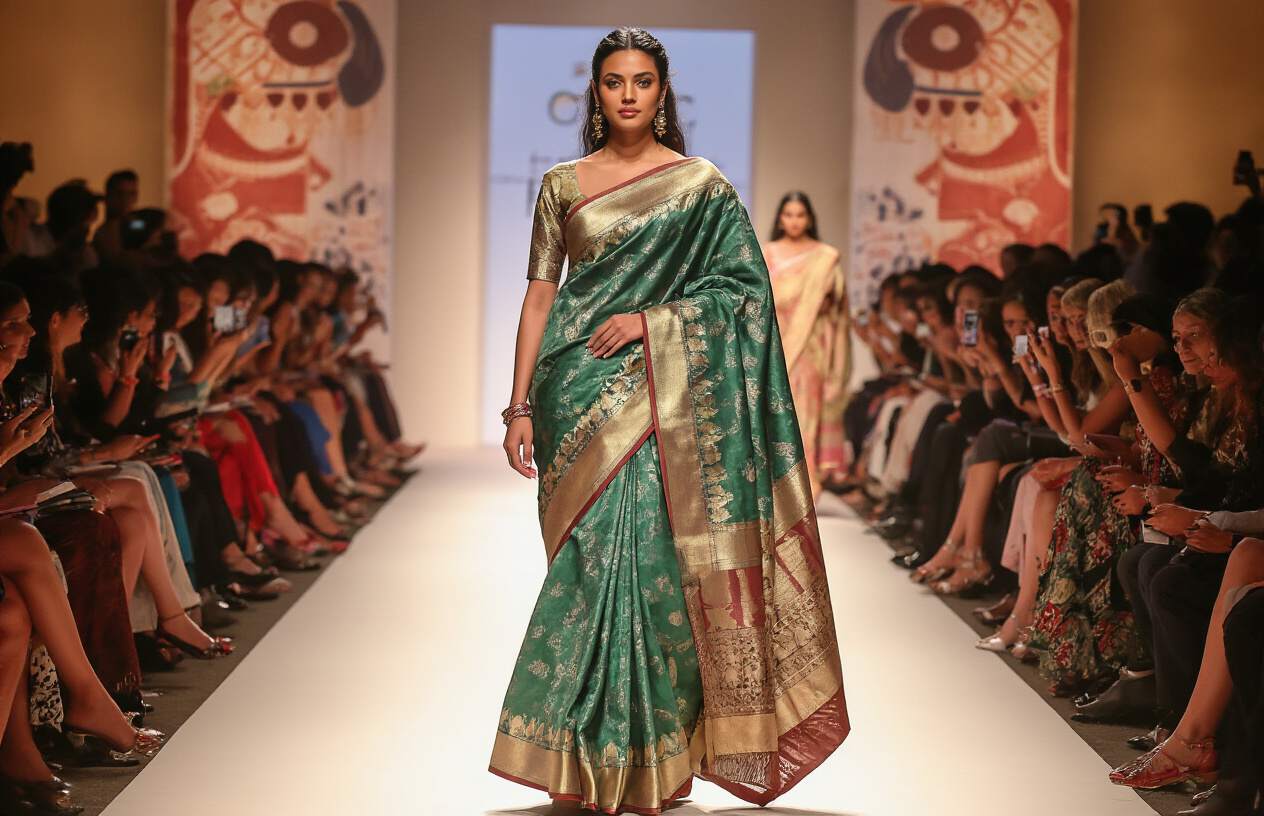
A. International Runway Appearances
The fashion world has done a complete 180 on traditional sarees. Major runways in Paris, Milan, and New York now regularly feature these timeless garments, but with contemporary twists that make fashion critics sit up and take notice.
Remember when Sabyasachi collaborated with Christian Louboutin? That fusion sent shockwaves through the industry. International designers aren’t just borrowing elements anymore—they’re showcasing full saree collections, studying the draping techniques, and incorporating traditional handloom fabrics into their portfolios.
What’s fascinating is how these runway appearances have transformed perception. Sarees aren’t just “ethnic wear” anymore. They’re high fashion. Period.
B. Diaspora Communities Reconnecting With Heritage
Sarees are having a moment among second and third-generation South Asians across the globe. The numbers don’t lie—online searches for “how to drape a saree” have shot up 300% in diaspora-heavy cities over the past three years.
Young professionals in London, Toronto, and Sydney are ditching the notion that sarees are just for special occasions. They’re styling them for work events, dinner parties, and even casual brunches.
Social media groups like “Saree Speaking” and “Six Yards Daily” have thousands of members exchanging styling tips, heritage stories, and supplier contacts. It’s more than fashion—it’s cultural reclamation happening in real time.
C. Cross-Border Design Collaborations
The magic happens when traditional weavers meet international designers. These collaborations aren’t just producing gorgeous garments—they’re preserving ancient techniques while breathing new life into them.
Take the recent partnership between Tamil Nadu’s Chettinad weavers and Swedish minimalist design house Acne Studios. The resulting collection sold out within hours. Why? Because these pieces tell a story that crosses continents.
Japanese design principles are finding their way into Bengal weaves. Italian color palettes are transforming Kanjeevaram silks. These aren’t dilutions of tradition—they’re expansions of possibility.
The best part? Revenue from these collaborations is flowing back to weaving communities, creating sustainable economic models that keep craft traditions alive.
D. Tourism’s Role in Promoting Traditional Textiles
Travelers aren’t just looking for selfies anymore—they want authentic experiences. Textile tourism has emerged as a major industry, with visitors flocking to weaving villages across India.
States like Gujarat and Rajasthan have developed specialized textile trails, where tourists can watch master weavers at work, learn basic techniques, and purchase directly from creators. This direct patronage has revitalized communities that were previously struggling.
The immersive workshops in places like Bhuj and Pochampally frequently have waitlists stretching months. Visitors return home as unofficial ambassadors for these traditions, spreading appreciation for sarees in their home countries.
Travel influencers documenting these experiences reach millions, introducing new audiences to the intricate world of traditional textiles and the stories woven into each thread.
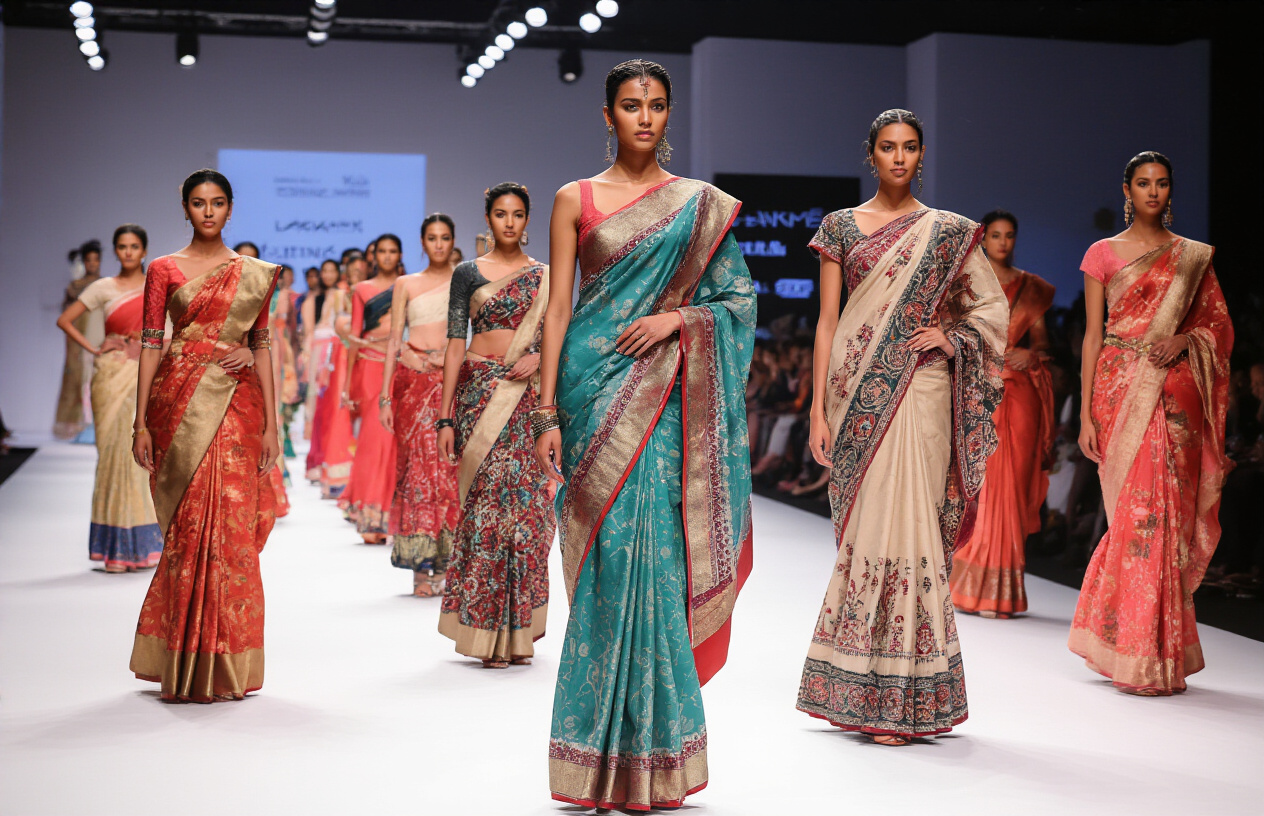
Traditional sarees have reclaimed their rightful place in the fashion world, bridging ancient cultural heritage with contemporary style sensibilities. Their historical significance continues to resonate while modern fashion has enthusiastically embraced these timeless textiles. Today’s women appreciate sarees for their remarkable versatility, allowing personal expression while honoring tradition.
Beyond fashion, this resurgence has created meaningful economic opportunities for traditional weaving communities whose craftsmanship was once at risk of being lost. As sarees gain global appreciation and cross-cultural adoption, they represent more than beautiful garments—they symbolize the enduring power of cultural heritage to remain relevant and inspirational in our modern world. Whether you’re a saree enthusiast or newcomer to this elegant drape, consider adding a traditional piece to your wardrobe and becoming part of this meaningful fashion renaissance.

